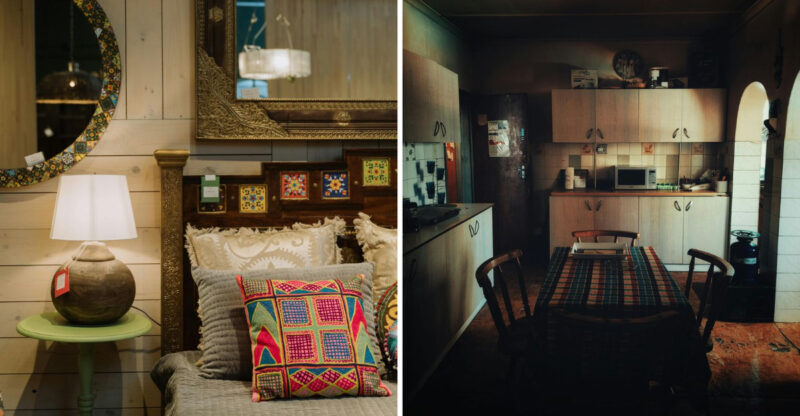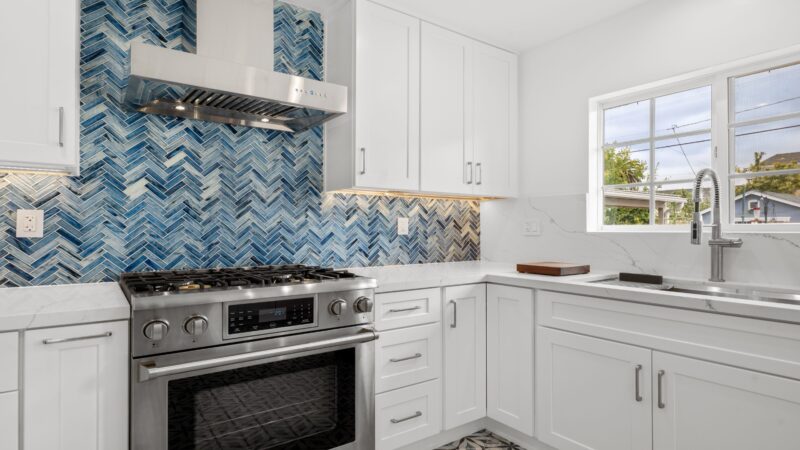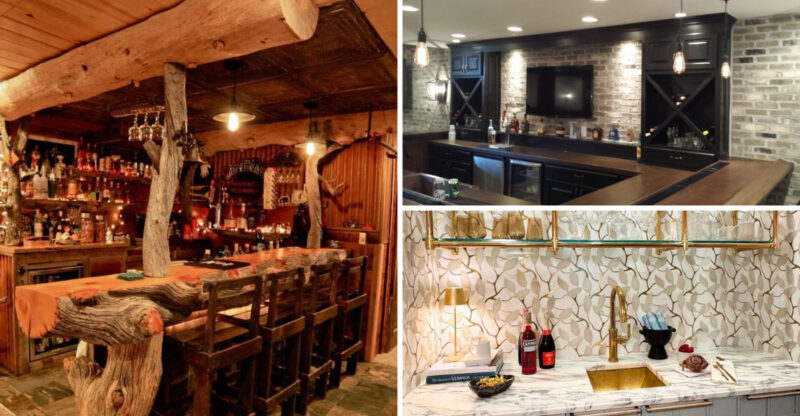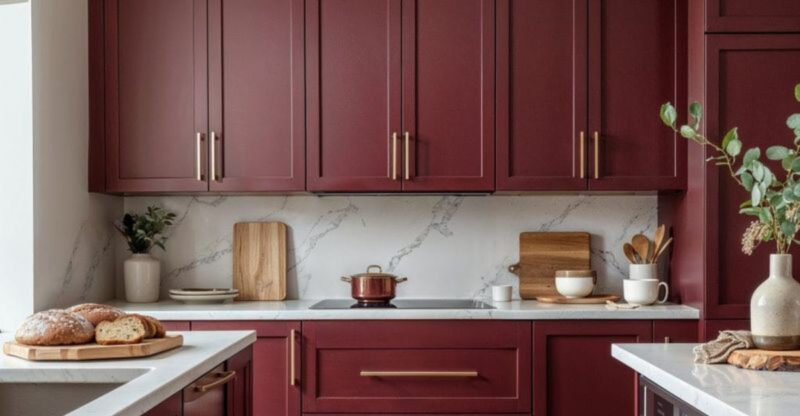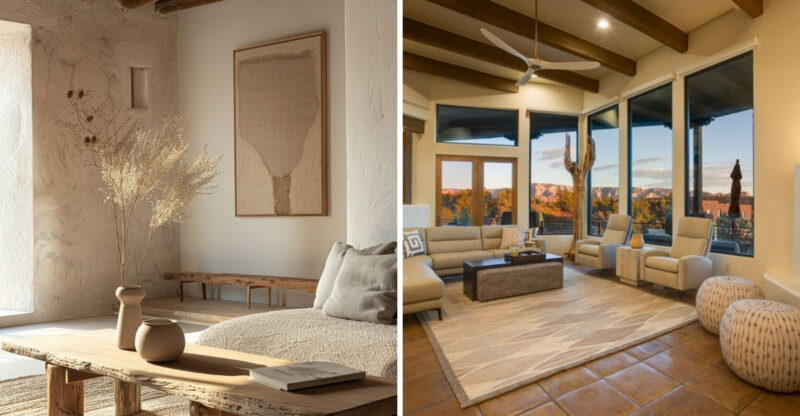26 Things To Never Put In An Entryway According To Interior Designers
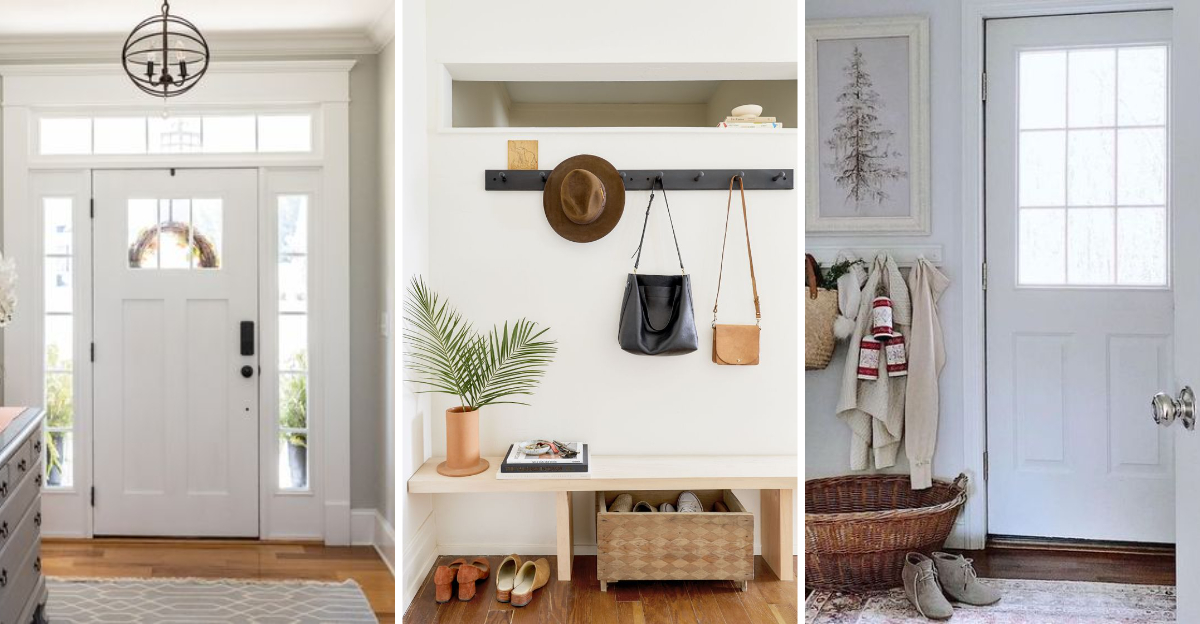
Your entryway creates the first impression of your home, setting the tone for what lies beyond. Unfortunately, many of us make design choices that turn this crucial space into a cluttered, dysfunctional mess.
I’ve consulted with top interior designers to identify the most common entryway mistakes that can instantly downgrade your home’s appeal and functionality.
1. Oversized furniture
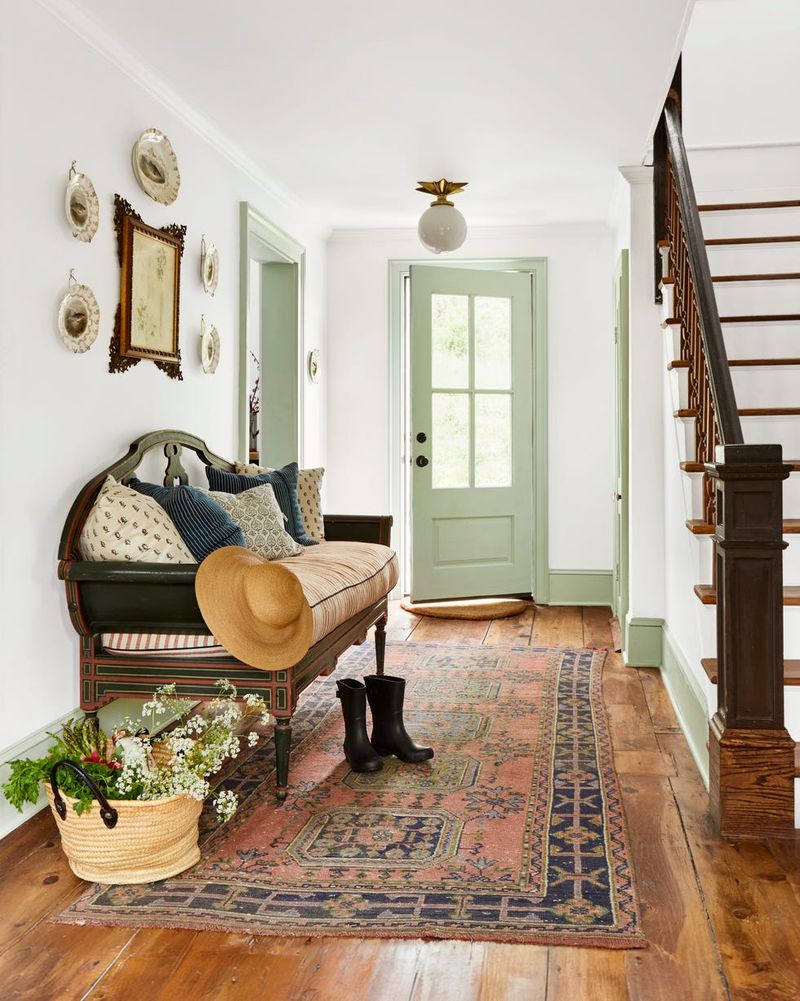
Bulky sofas and massive console tables will suffocate your entryway faster than you can say “welcome home.” These space-hogging pieces create instant bottlenecks, making it difficult for people to move through comfortably.
Designers recommend choosing slim, proportional pieces that complement your entryway’s dimensions. A narrow bench or a floating shelf often provides the same functionality without the spatial penalty.
Remember that entryways need breathing room to function properly. When guests arrive and everyone’s trying to get in or out simultaneously, you’ll appreciate having prioritized movement over that statement armchair you loved in the showroom.
2. Dirty shoes
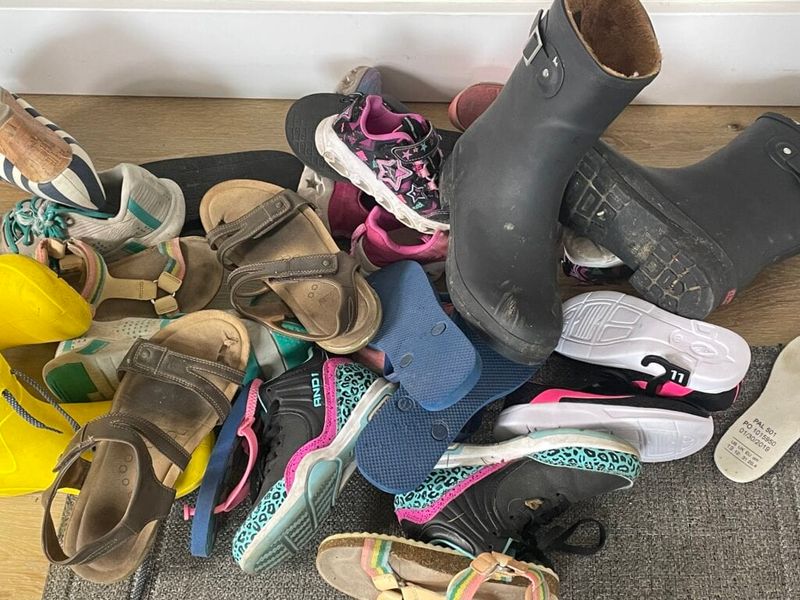
Nothing kills an entryway’s appeal faster than a jumbled pile of muddy boots and grimy sneakers. This eyesore not only creates visual chaos but also tracks dirt throughout your home.
Smart homeowners establish a system whether it’s a dedicated shoe cabinet, stylish basket, or organized rack—that keeps footwear contained and orderly. The key is making shoe storage both accessible and discreet.
If space allows, consider a small bench with built-in storage where people can sit while removing shoes. This practical addition encourages the habit of shoe removal while maintaining your entryway’s clean, welcoming atmosphere.
3. Piles of mail
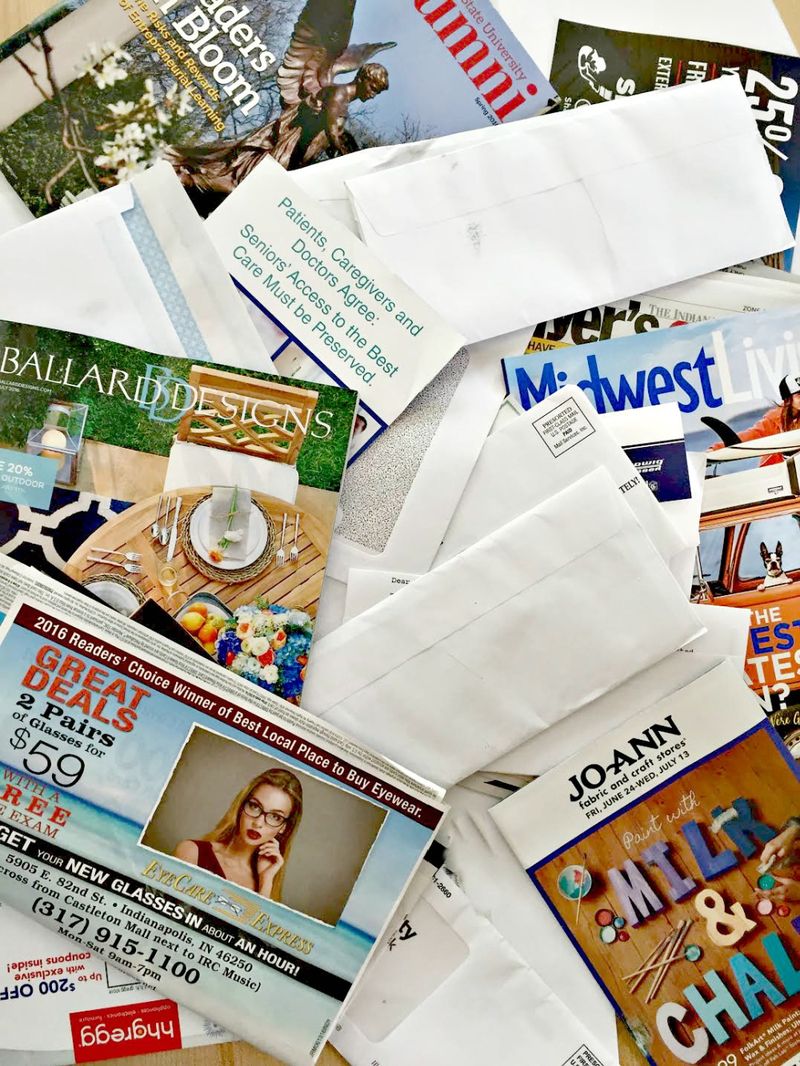
Those innocent-looking stacks of letters, bills, and magazines quickly transform into paper mountains that scream “disorganized home.” Mail piles attract more clutter like magnets, turning your entryway into command central for household chaos.
Create a simple sorting system instead a decorative box or wall-mounted organizer works wonders. The trick is establishing a routine where mail gets processed regularly, not just dumped.
Many designers recommend keeping mail completely out of the entryway if possible. Consider designating a small area in your kitchen or office for mail processing, keeping your entryway clean and focused on its primary function: welcoming people into your home.
4. Pet crates
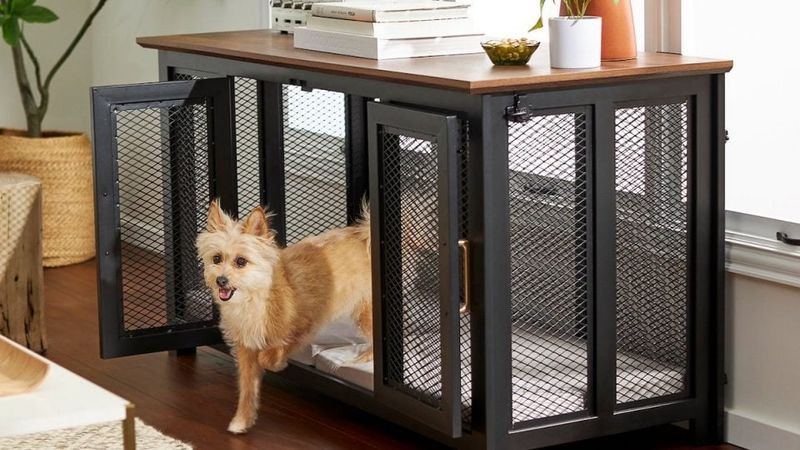
Your furry friend’s home shouldn’t be the first thing guests encounter. Large pet crates eat up valuable floor space and create an immediate visual obstruction in your entryway.
While I understand the convenience of keeping pet supplies near the door for walks, designers universally agree that bulky crates belong elsewhere. If you must keep pet items in this area, opt for stylish, closed storage solutions that conceal leashes, waste bags, and other necessities.
Consider relocating your pet’s sleeping quarters to a living area or bedroom where they’ll feel more integrated with family activities. This simple change dramatically improves both your entryway’s appearance and your pet’s comfort level.
5. Harsh lighting
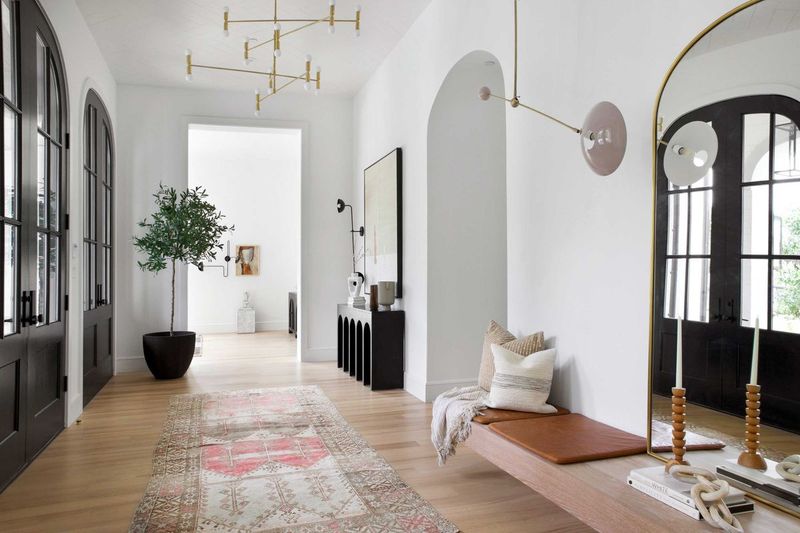
Blinding overhead lights create an unwelcoming atmosphere that feels more like a police interrogation than a warm greeting. Harsh lighting casts unflattering shadows, making your entryway feel cold and institutional rather than inviting.
Layered lighting transforms this space completely. Consider a combination of ambient ceiling fixtures (with dimmers!), wall sconces at eye level, and perhaps a small table lamp for warmth.
The ideal entryway lighting should be bright enough for practical tasks like finding keys but soft enough to create a welcoming glow. This balanced approach ensures your home makes the perfect first impression regardless of whether guests arrive during daylight hours or after dark.
6. Loud wall colors
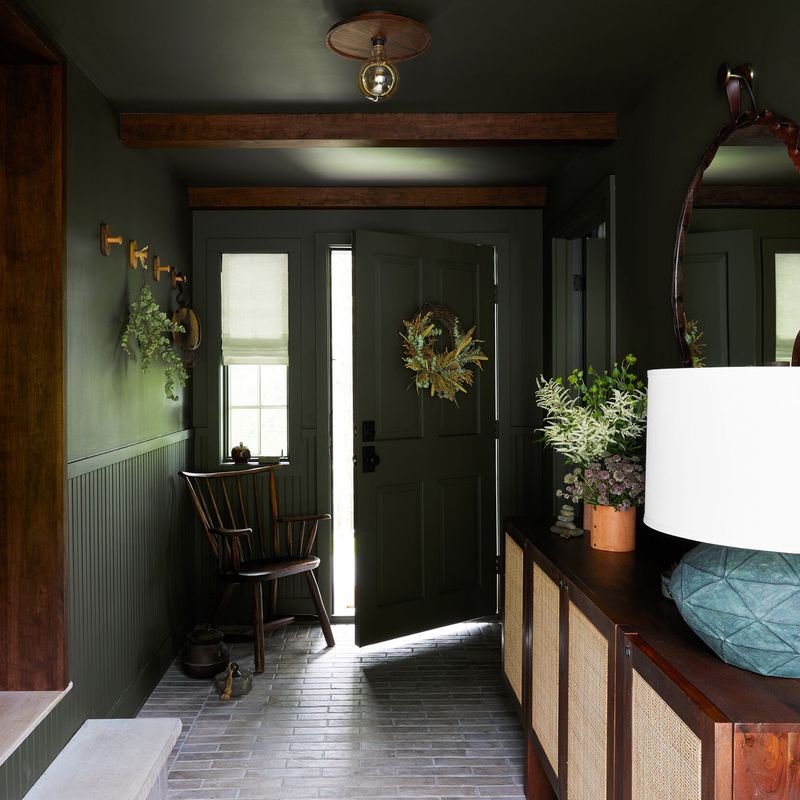
Fire-engine red or electric blue walls might seem bold and personality-filled, but they often overwhelm entryways and create instant visual fatigue. These intense colors can make small spaces feel chaotic rather than intentional.
Designers typically recommend softer, more neutral palettes for entryways that flow into other rooms. This doesn’t mean boring consider sophisticated taupes, gentle greens, or warm grays that create a serene welcome while still expressing style.
If you crave color, introduce it through accessories like artwork, rugs, or decorative objects instead. This approach gives you flexibility to change accents seasonally while maintaining a timeless foundation that won’t require repainting when trends change.
7. Too many family photos
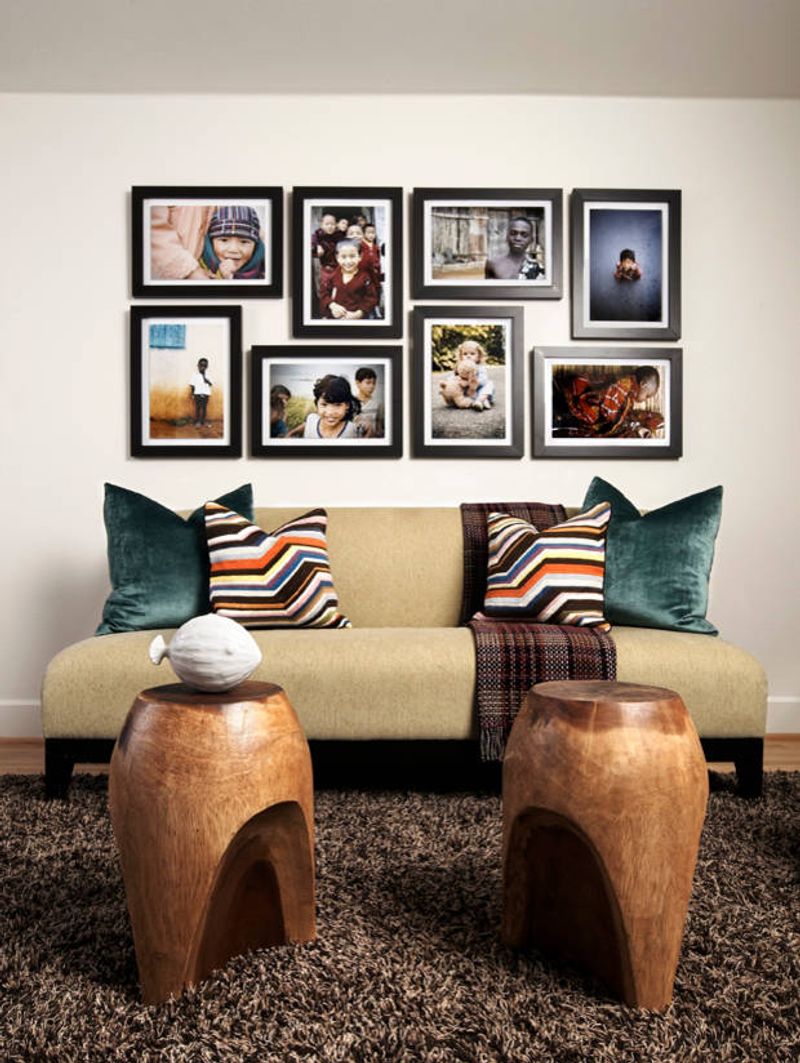
Turning your entryway into a comprehensive family history display can overwhelm visitors before they’ve even stepped fully inside. While showcasing loved ones seems welcoming, a photo overload creates visual clutter and feels intensely personal for a transitional space.
Most designers suggest limiting entryway photos to just a few special images in cohesive frames. This curated approach makes each photo more meaningful while maintaining a cleaner aesthetic.
Consider relocating your extensive photo collection to hallways or living areas where guests can appreciate them during longer visits. Your entryway should hint at your personality without revealing every family milestone—save some stories for when visitors are comfortably seated with a drink in hand!
8. Excessive coat racks
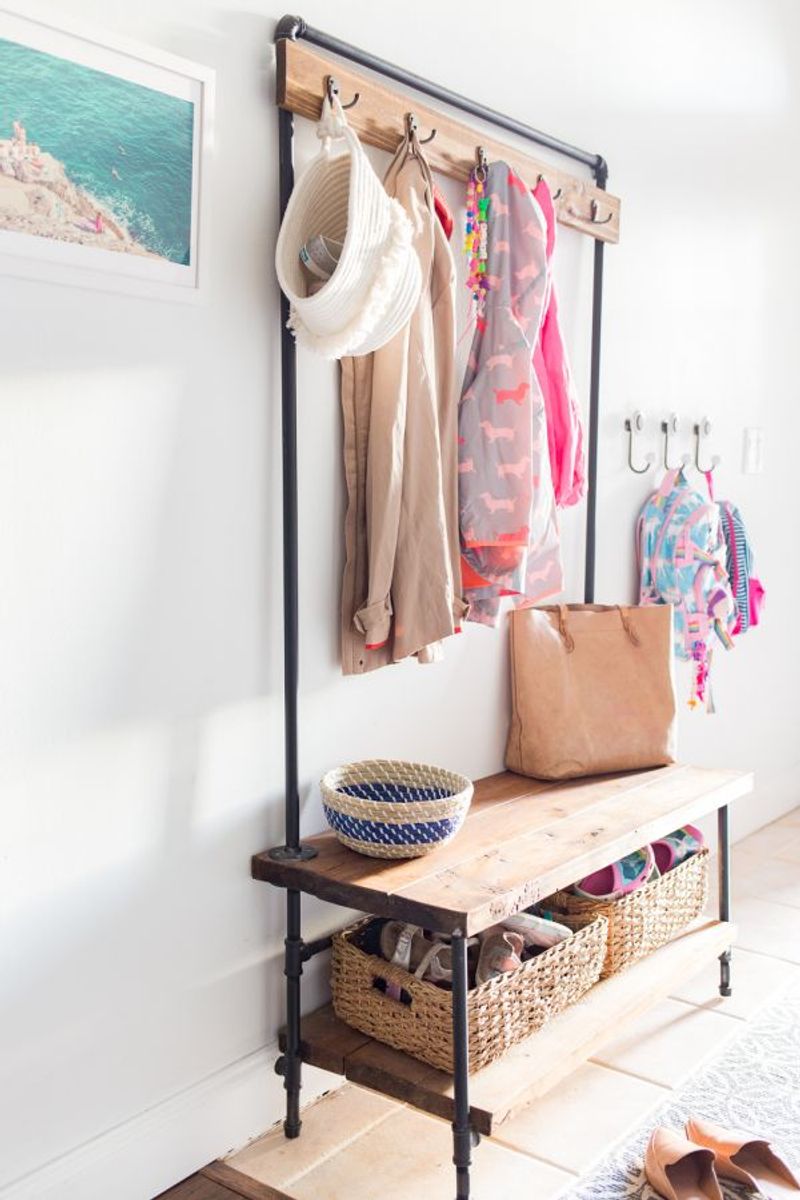
Multiple freestanding coat racks create an instant forest of furniture that blocks movement and collects dust. When packed with jackets, these towering structures make your entryway feel like an overstuffed closet rather than a welcoming space.
One streamlined solution whether a wall-mounted rack, hooks, or a single quality stand is typically sufficient. The key is choosing an option proportionate to your space and family size.
Designers often recommend implementing a seasonal rotation system, keeping only current-weather jackets accessible. This practical approach prevents accumulation while maintaining visual order. For homes with limited space, consider installing hooks on the inside of a nearby closet door to keep coats completely out of sight.
9. Cluttered key trays
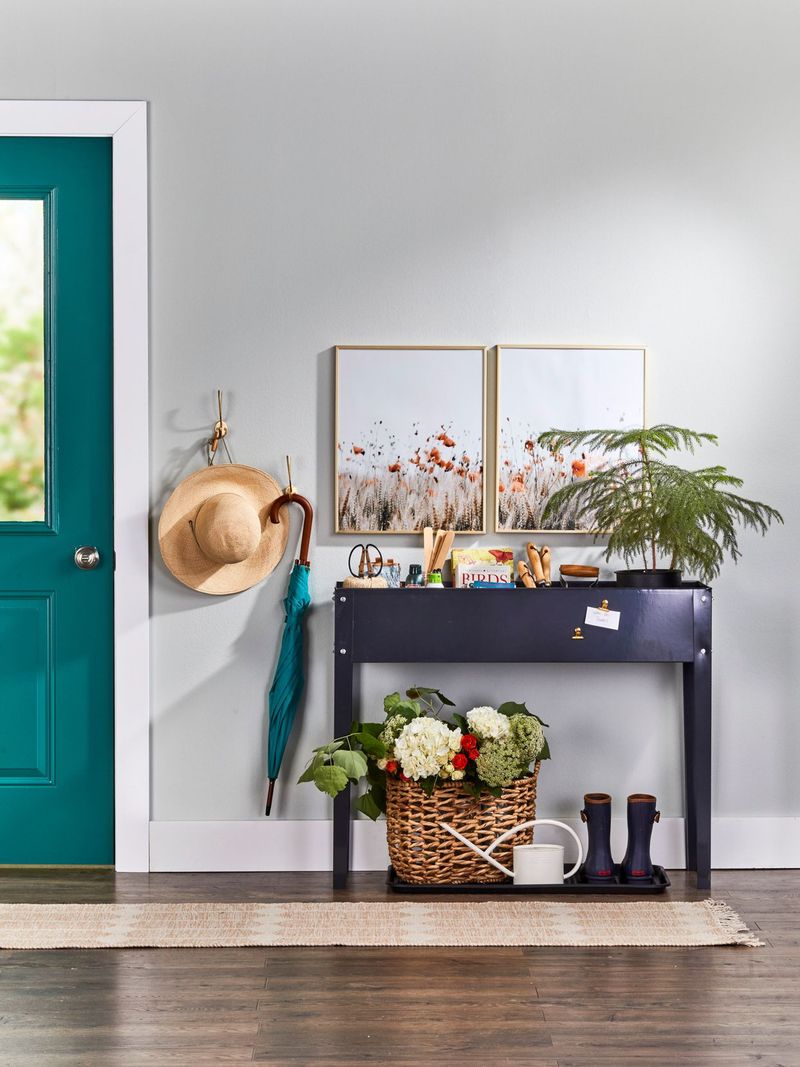
That innocent little dish quickly becomes a catch-all disaster zone collecting everything from loose change to grocery receipts, hand sanitizer, and mysterious objects nobody claims. The result is a chaotic first impression that suggests disorganization throughout your home.
Designers recommend replacing open catchalls with compartmentalized solutions that enforce organization. Look for entryway organizers with designated spaces for different items keys, sunglasses, wallets to prevent miscellaneous clutter from accumulating.
For a truly polished look, consider hiding these everyday items completely. A small drawer in an entryway console or a wall-mounted cabinet with a door keeps essentials accessible but invisible, maintaining your entryway’s clean, welcoming appearance.
10. Bulky gym equipment
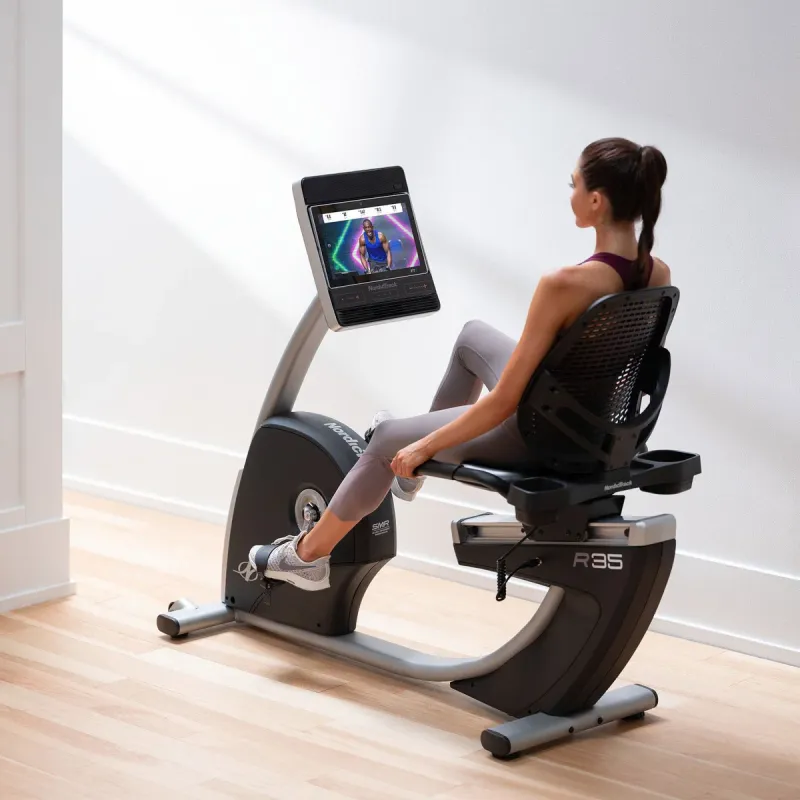
That treadmill or exercise bike by the front door sends the wrong message to both visitors and yourself. Beyond creating an obvious eyesore, exercise equipment in entryways creates hazardous obstacles in a high-traffic area.
If space constraints have forced fitness equipment into your entryway, designers suggest it’s time to rethink your home’s layout. Even compact equipment belongs in dedicated exercise spaces or multifunctional rooms where it won’t impede daily traffic flow.
For those truly committed to entryway workouts, consider equipment that folds completely away or can be disguised as furniture when not in use. However, most designers maintain that keeping fitness gear and welcome spaces entirely separate creates a more harmonious home environment.
11. Large baskets without lids
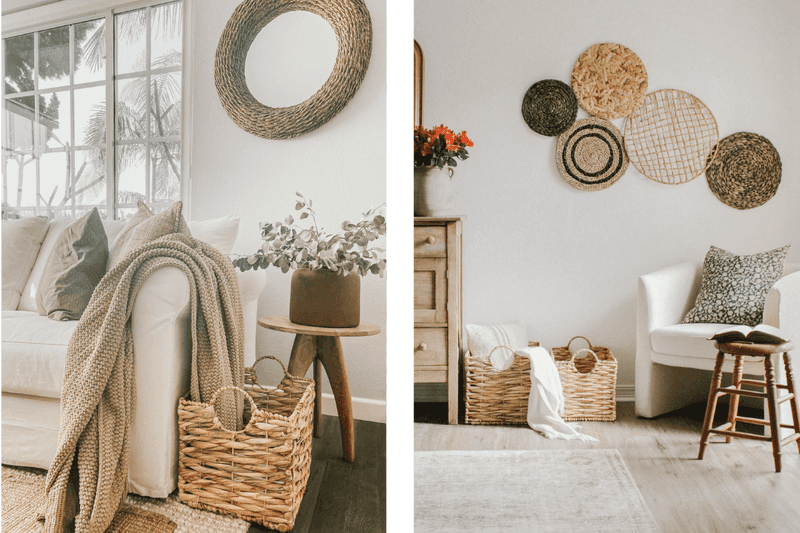
Open storage baskets quickly become visible dumping grounds for everything from kids’ toys to unsorted mail. While they seem like practical solutions, lidless baskets actually encourage clutter by making it too easy to toss items in without proper organization.
Designers prefer closed storage solutions that hide visual chaos. Baskets with fitted lids, decorative boxes with tops, or cabinets with doors maintain the convenience of quick storage while preserving your entryway’s aesthetics.
If you must use open baskets, limit them to specific purposes—perhaps one small basket for gloves and scarves in winter. The key is establishing clear boundaries for what belongs in each container and maintaining those systems consistently.
12. Random storage bins
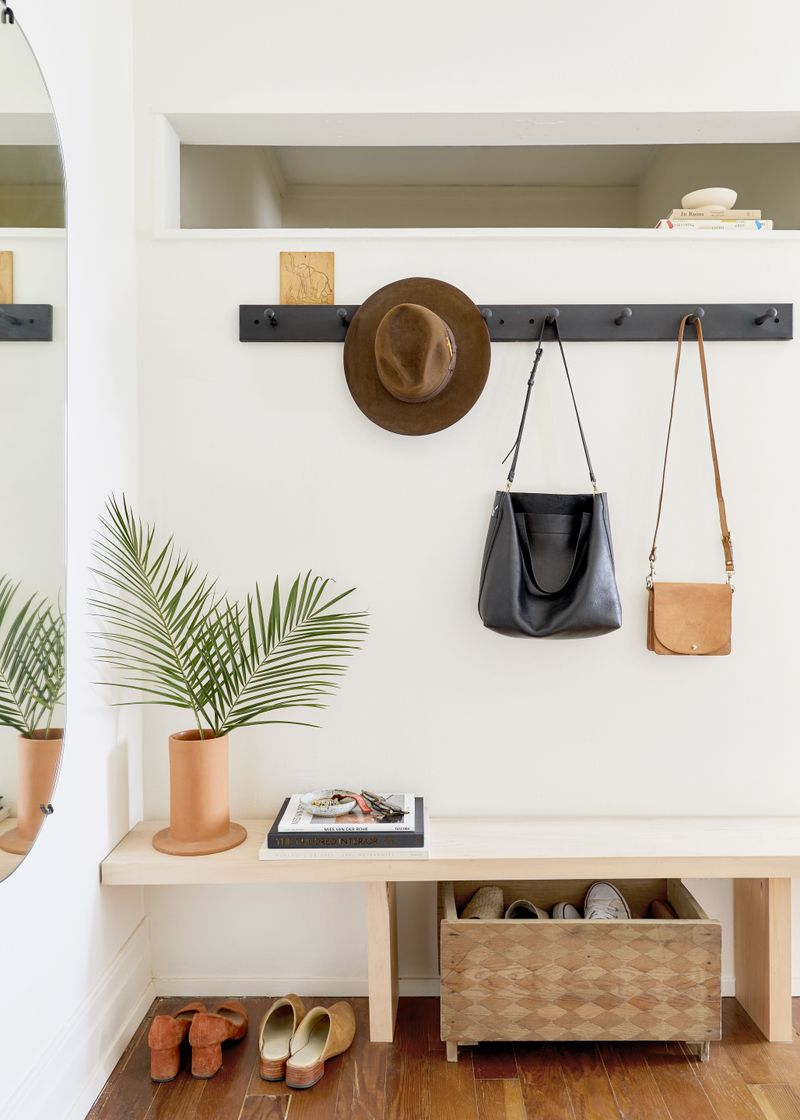
Mismatched plastic containers and utilitarian storage bins destroy your entryway’s aesthetic faster than anything else. These organizational eyesores broadcast “temporary solution” rather than thoughtful design, making your home feel perpetually unfinished.
Designers recommend investing in storage pieces that complement your decor. Attractive wooden crates, matching fabric bins, or furniture with built-in storage maintains organization without sacrificing style.
When selecting storage solutions, prioritize pieces that could reasonably pass as intentional decor. The best entryway storage solutions perform double-duty perhaps a bench with hidden storage underneath or decorative boxes that look like deliberate accessories while secretly containing seasonal items.
13. Unsecured rugs
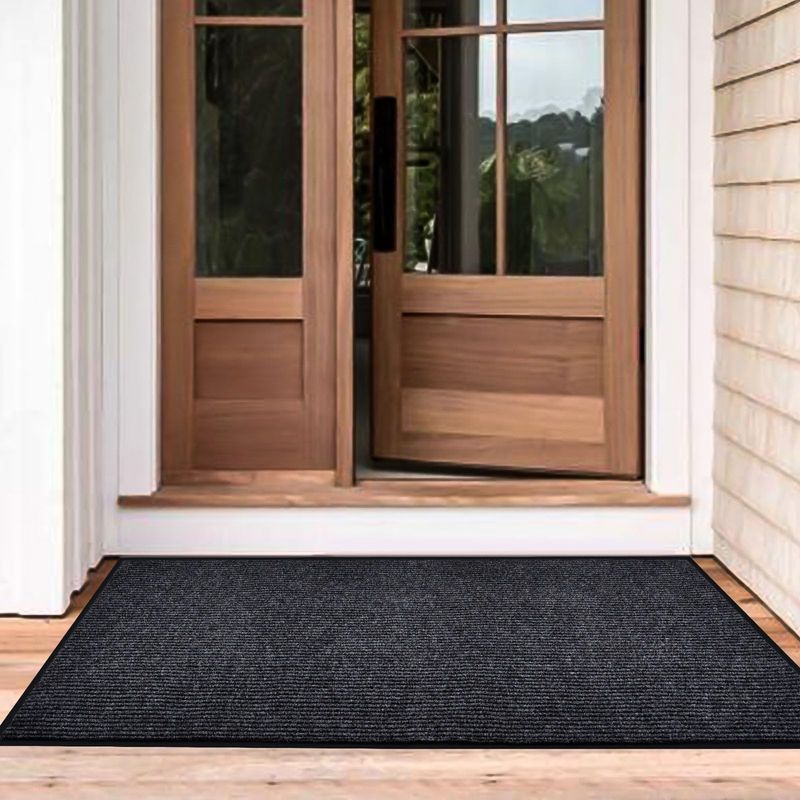
Sliding, bunching area rugs create both eyesores and serious safety hazards in entryways. These accident-waiting-to-happen floor coverings trip guests, catch in doors, and never stay properly positioned despite your best efforts.
Proper entryway rugs should be firmly anchored with quality rug pads or carpet tape designed specifically for this purpose. The investment in proper securing materials pays off in both safety and appearance.
Many designers actually recommend skipping traditional area rugs in favor of runner-style rugs with rubber backing or indoor/outdoor materials specifically designed for high-traffic areas. These specialized options maintain their position naturally while standing up to the dirt and moisture that inevitably enter with shoes.
14. Holiday décor year-round
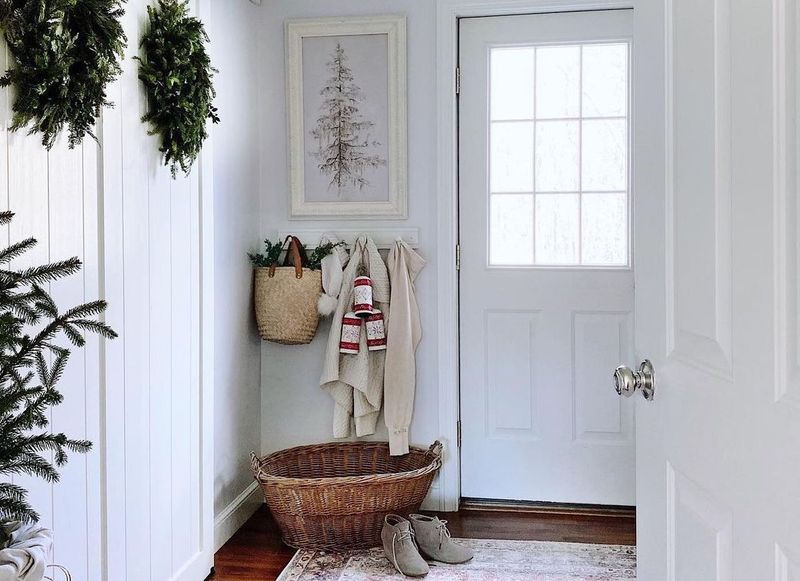
Those Christmas stockings still hanging in June send a concerning message about your attention to detail. Seasonal decorations that overstay their welcome make your home feel neglected rather than festive, suggesting you can’t keep up with basic household management.
Designers recommend creating a dedicated storage system for seasonal items, with clearly labeled containers and a calendar reminder for both installation and removal. This organized approach prevents decoration creep.
If you enjoy regularly refreshing your entryway’s look, consider investing in versatile, season-neutral decor that can be easily accessorized with small seasonal touches. This approach allows for creative expression without the full commitment of theme-specific decorations that will eventually become visibly outdated.
15. Open shelving with clutter
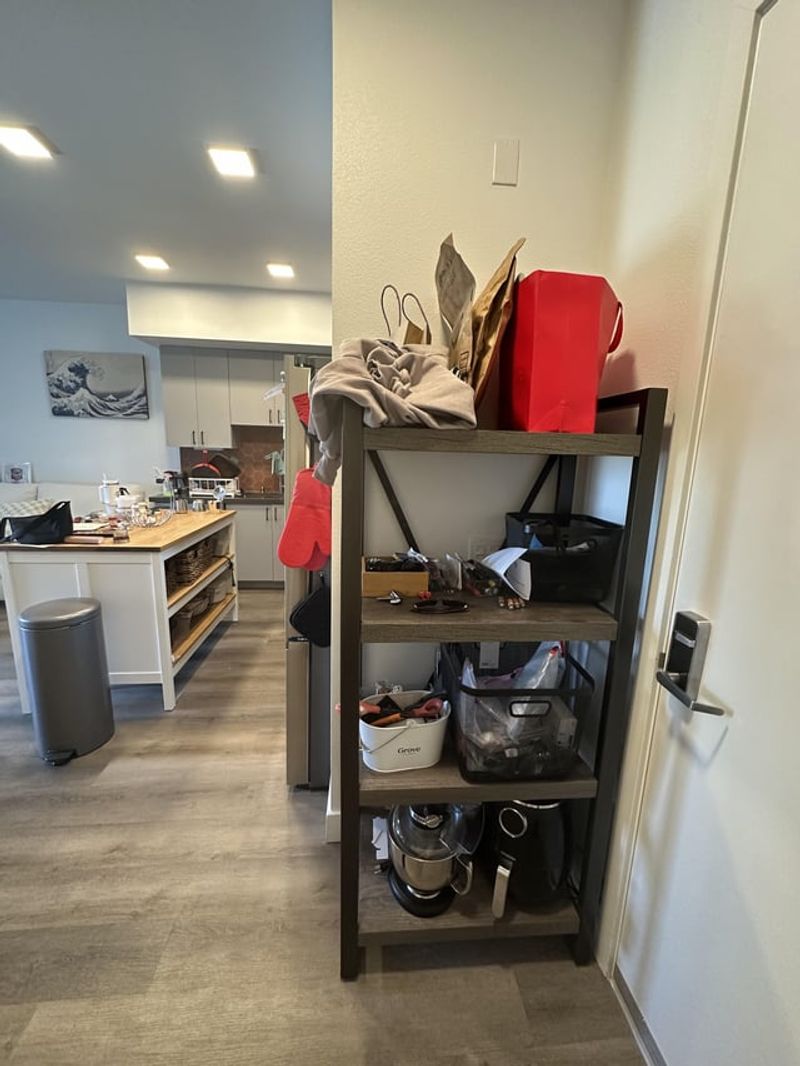
Those Instagram-worthy open shelves quickly become collection points for random household debris rather than curated displays. Without constant attention, exposed shelving showcases disorganization rather than highlighting carefully selected decorative pieces.
Designers often suggest replacing open shelving with closed storage in entryways cabinets, drawers, or furniture with doors that hide everyday items. This approach maintains a clean aesthetic without requiring daily styling.
If you’re committed to the open shelving look, limit yourself to just one or two floating shelves with minimal, intentional styling. The key is ruthless editing each item should earn its visible spot through beauty or function, with absolutely no tolerance for miscellaneous clutter.
16. Too many mirrors
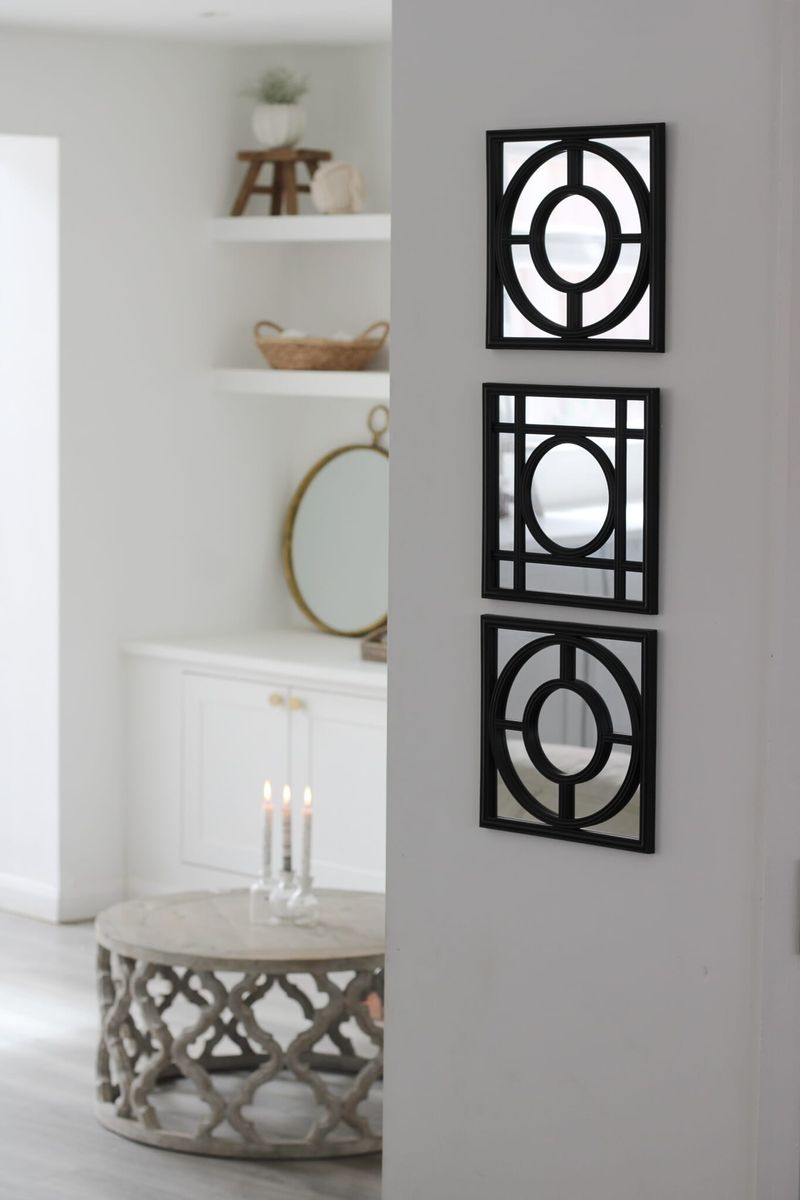
Multiple reflective surfaces create a disorienting fun-house effect that feels visually chaotic rather than elegant. While one strategic mirror can enhance light and create the illusion of space, an overabundance of mirrors makes your entryway feel fragmented and confused.
Designers typically recommend limiting entryways to a single statement mirror with intentional placement. Position it where it reflects something attractive perhaps a light source or an art piece rather than another mirror or blank wall.
When selecting that perfect mirror, consider scale carefully. An appropriately sized mirror should feel proportional to your wall space without overwhelming other elements. This balanced approach allows you to enjoy the practical benefits of entryway mirrors without creating the dizzying effect of multiple reflective surfaces competing for attention.
17. Dim or flickering lights
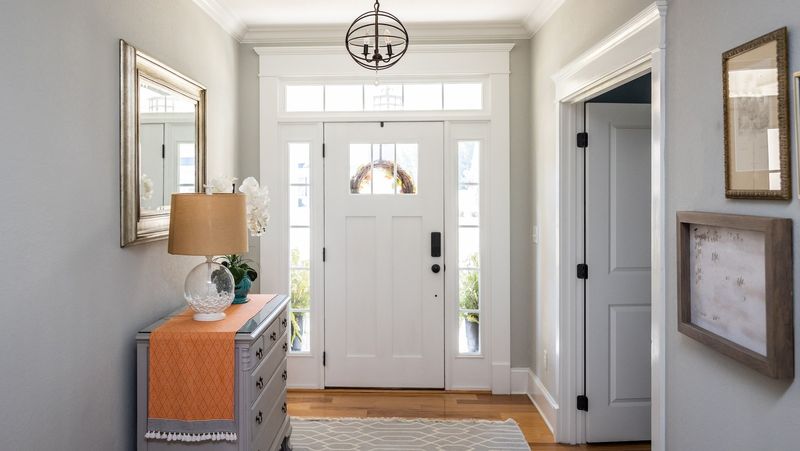
Inadequate lighting transforms your entryway from welcoming to downright creepy. Dim bulbs or flickering fixtures create an unsettling atmosphere that feels neglected at best and horror-movie-worthy at worst.
Proper entryway lighting requires thoughtful layering ambient ceiling lights, wall sconces, and perhaps task lighting near mirrors or key storage areas. Each light source should be properly maintained with quality bulbs of appropriate brightness.
Beyond just brightness, consider light temperature carefully. Warm-toned lighting (2700-3000K) creates a more inviting atmosphere than cool blue-toned bulbs, which can feel clinical and harsh. This simple adjustment dramatically impacts how welcoming your entryway feels, especially during evening hours when artificial lighting matters most.
18. Laundry hampers
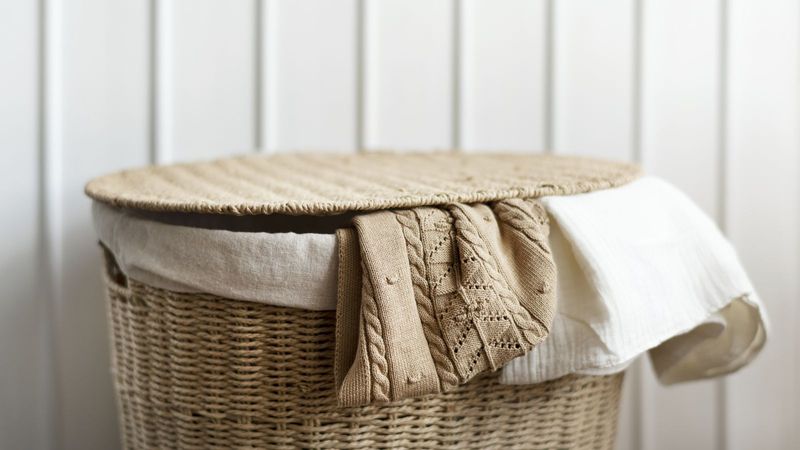
Nothing says “welcome to my home” quite like a basket of dirty clothes greeting guests at the door. Even the most attractive hamper can’t disguise its true purpose, creating an immediate impression of household chores rather than hospitality.
Designers unanimously agree that laundry collection belongs elsewhere ideally in bedrooms, bathrooms, or dedicated laundry spaces. This separation maintains appropriate boundaries between public and private household functions.
If your home’s layout makes the entryway a necessary laundry checkpoint, invest in closed storage furniture that completely conceals hampers from view. A bench with a hinged top or cabinet with doors can temporarily house laundry items while maintaining your entryway’s dignity and your family’s privacy.
19. Folding chairs
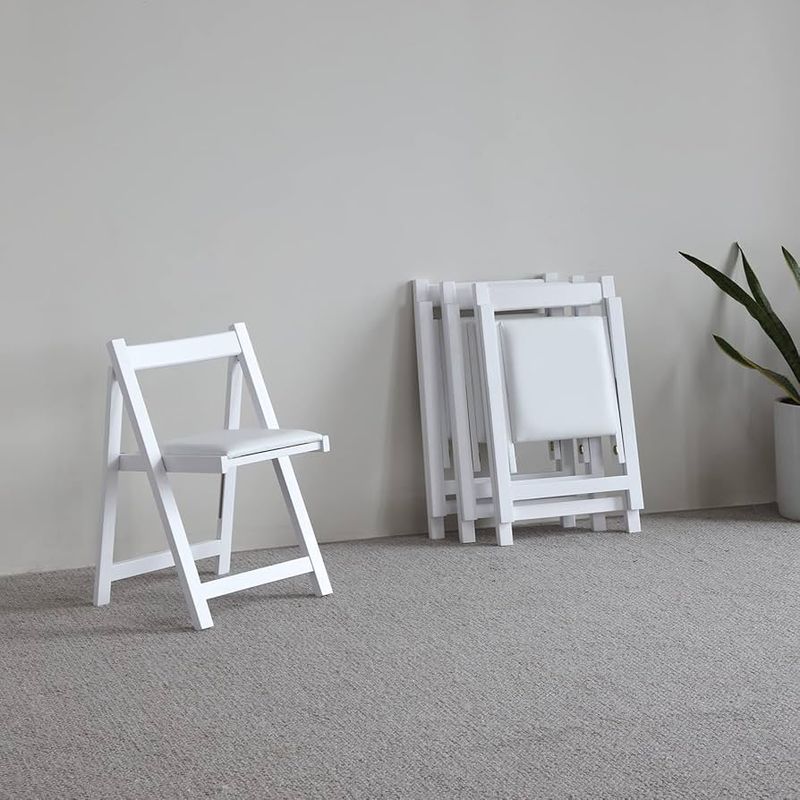
Those emergency seating options leaning against your entryway wall broadcast “temporary” rather than “thoughtful home.” Folding chairs create an immediate visual suggestion that your home lacks proper furnishings or permanent solutions.
Designers recommend finding dedicated storage for occasional seating in closets or other hidden areas. When extra seating is needed, you can retrieve it without compromising your entryway’s everyday appearance.
If seating in your entryway is truly necessary, invest in a proper bench, small stool, or chair that complements your decor. These intentional pieces serve the same function as folding chairs but contribute to your home’s aesthetic rather than detracting from it. The right entryway seating feels like a design choice rather than a hasty afterthought.
20. Overstuffed shoe racks
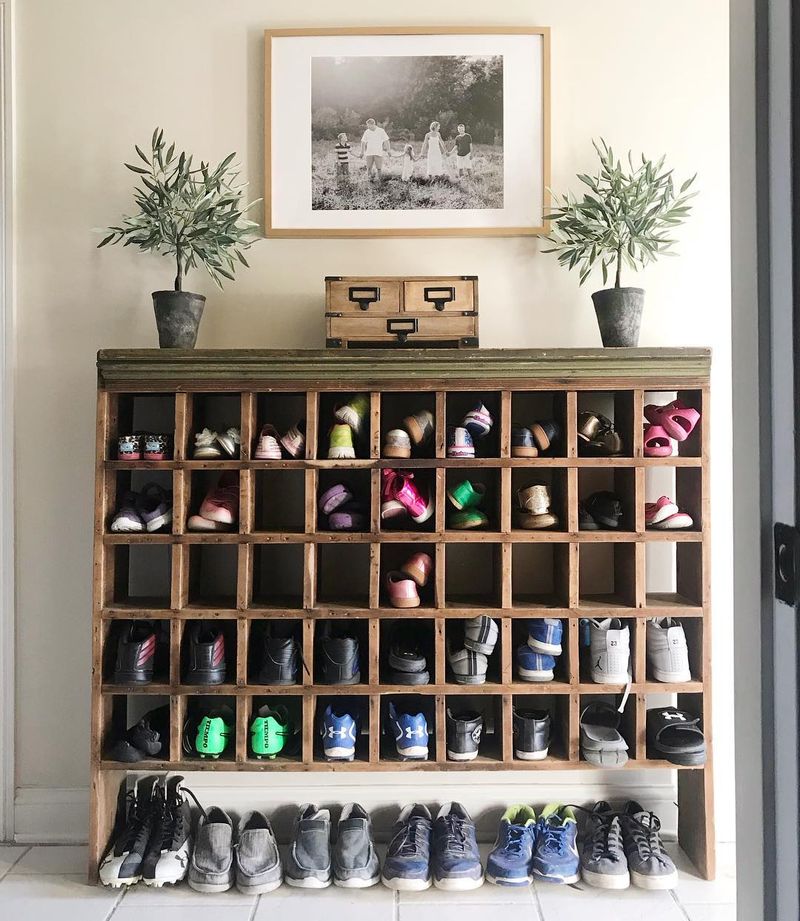
Bursting shoe organizers with footwear spilling onto the floor create an immediate impression of chaos. That multi-tier rack might seem practical, but when packed beyond capacity, it becomes a visual announcement of disorganization.
Designers suggest implementing the “one in, one out” rule for entryway shoes limiting visible footwear to only pairs currently in rotation. Seasonal or special occasion shoes should be stored elsewhere.
Consider closed storage solutions like cabinets with doors, benches with hidden compartments, or decorative baskets with lids. These options maintain easy access while concealing visual clutter. Remember that your entryway shoe storage should accommodate daily needs without becoming a comprehensive display of every footwear option your household owns.
21. Inappropriate artwork
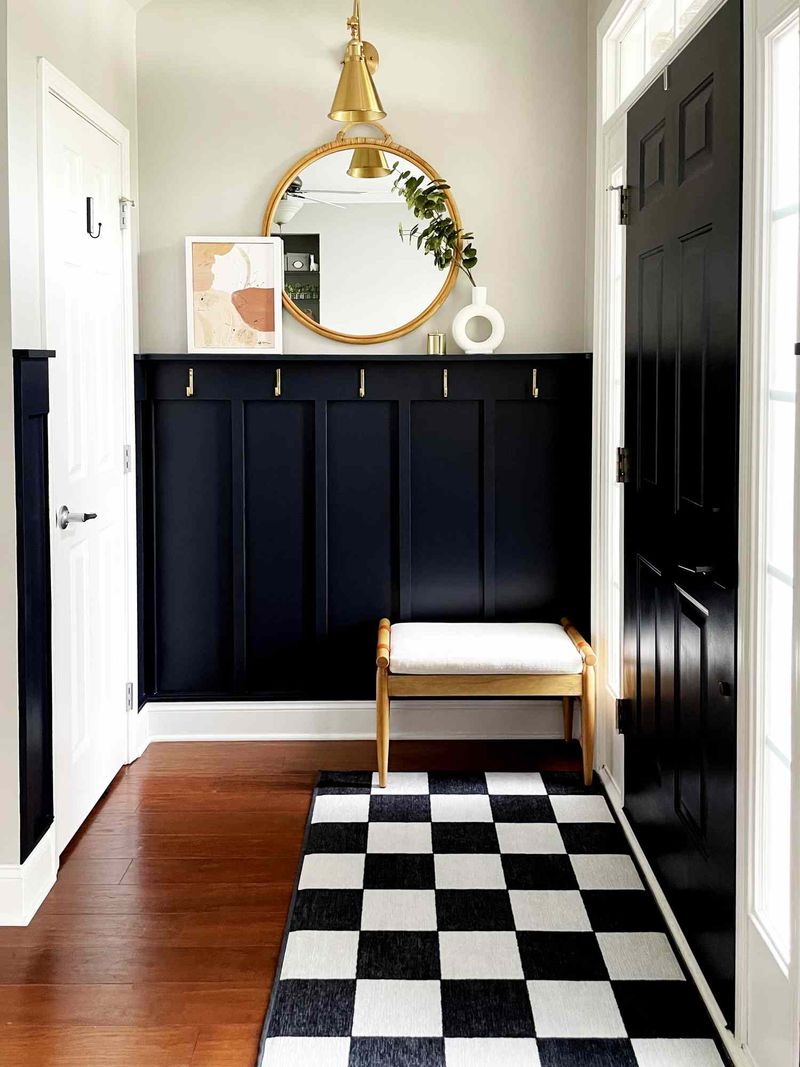
Controversial, extremely personal, or potentially offensive art creates immediate discomfort for visitors entering your home. While your art collection should reflect your personality, the entryway isn’t the place for provocative pieces that might make guests uncomfortable before they’ve even settled in.
Designers typically recommend more neutral, welcoming imagery for entryways landscapes, abstracts, or family photos in tasteful frames work well. Save more challenging artistic statements for private areas where context and conversation can accompany them.
Scale matters tremendously in entryway art selection. Pieces should be proportionate to wall space—neither tiny works lost on large walls nor overwhelming pieces that dominate narrow hallways. This balanced approach creates visual interest without overwhelming the transitional nature of the space.
22. Broken décor
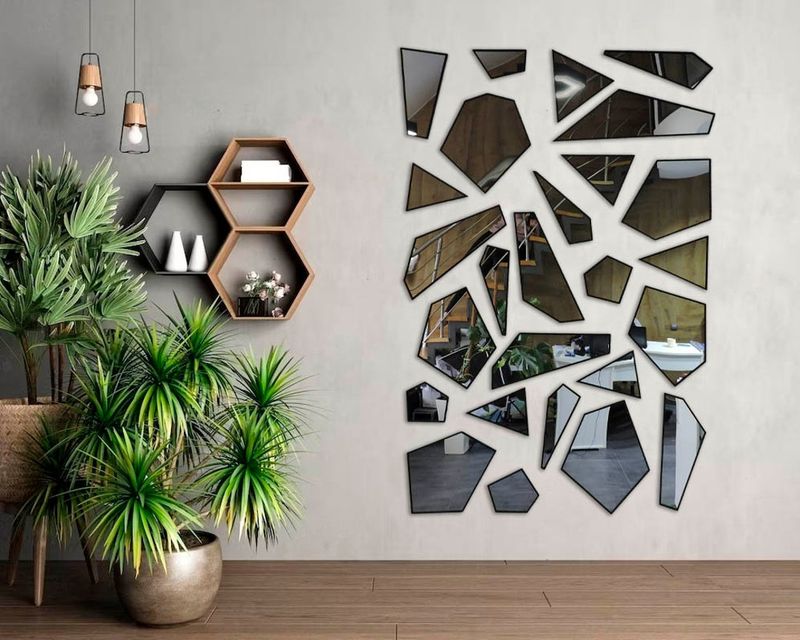
Cracked mirrors, wobbly console tables, or picture frames with missing glass communicate neglect rather than welcome. These damaged items suggest you don’t notice or worse, don’t care about the deteriorating condition of your home.
Designers emphasize that it’s better to have fewer, well-maintained pieces than numerous broken items. Quality over quantity applies especially to entryways, where each element receives heightened scrutiny.
If budget constraints prevent immediate replacement of damaged items, consider temporarily removing them until repairs or replacements are possible. An intentionally minimalist entryway feels far more sophisticated than one filled with items in various states of disrepair. Remember that your entryway creates crucial first impressions—make them count with intact, well-maintained decor.
23. Outdated calendars
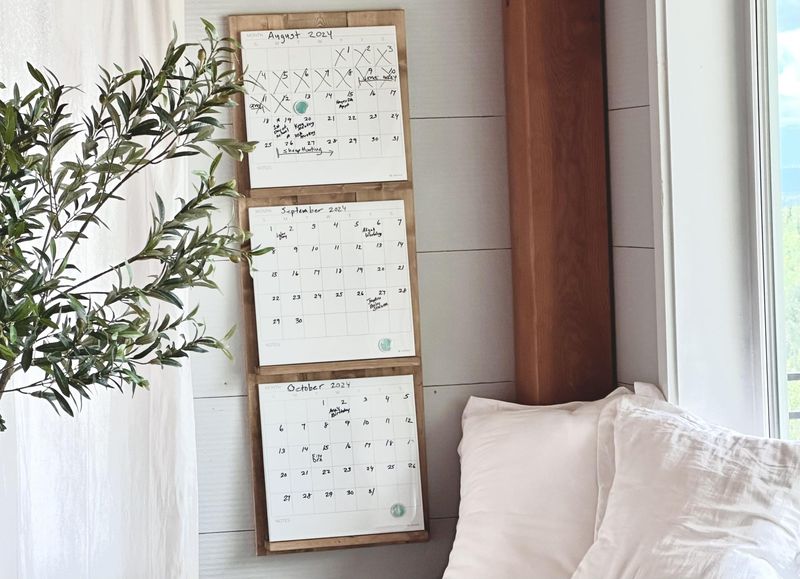
That wall calendar permanently stuck on March 2022 broadcasts disorganization and inattention to detail. Outdated time-keeping devices suggest your home exists in a strange time warp rather than the present moment.
If functional calendars are necessary in your entryway, designers recommend digital options or perpetual calendars that don’t require monthly updates. These alternatives provide the utility without the potential embarrassment of visibly outdated information.
Many interior experts actually suggest removing calendars from entryways entirely, relocating them to kitchen command centers or home offices instead. This approach keeps time management tools where they’re most useful while maintaining your entryway as a transitional space focused on welcoming rather than scheduling.
24. Overly fragrant diffusers

Intense artificial scents assault visitors’ senses before they’ve even removed their coats. Those super-strong reed diffusers or plug-in air fresheners might smell pleasant to you, but they can trigger headaches, allergies, or simply overwhelm guests unaccustomed to your preferred fragrance.
Designers generally recommend subtle, natural scenting methods for entryways perhaps a small vase of fresh flowers or a lightly scented candle that’s occasionally burned rather than constant fragrance emitters. This gentle approach creates pleasant ambiance without overwhelming sensitivity.
If odor control is your primary concern, address the source directly rather than masking it with heavy fragrances. Proper ventilation, regular cleaning, and air-purifying plants create a naturally fresh environment that welcomes without overwhelming visitors’ sense of smell.
25. Trash or recycling bins
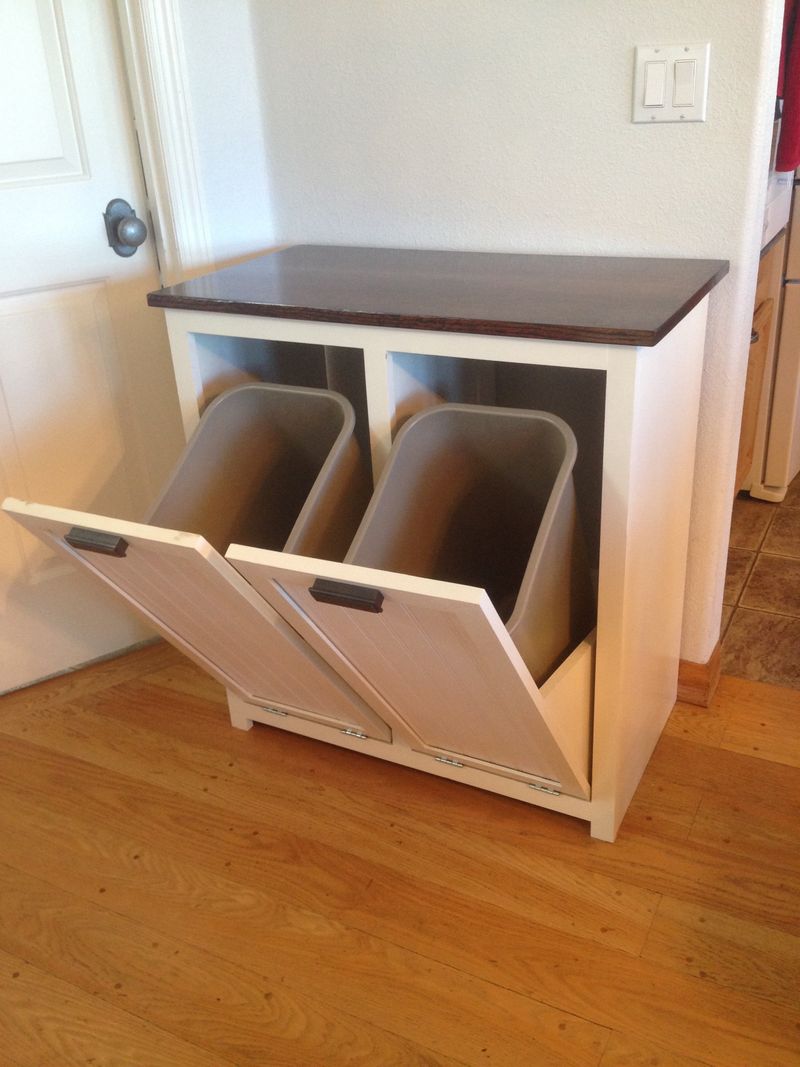
Garbage containers—even decorative ones create immediate negative impressions in entryways. These utilitarian necessities broadcast household waste management rather than welcome, regardless of how attractive the container might be.
Designers universally recommend relocating trash and recycling bins to less visible areas—kitchens, utility rooms, or garages where their function doesn’t compete with your home’s initial impression. This separation maintains appropriate boundaries between waste management and hospitality.
If limited space absolutely requires entryway waste solutions, look for furniture designed to completely conceal bins behind cabinet doors or decorative screens. The goal is making these practical necessities invisible to guests entering your home, preserving the clean, welcoming atmosphere that proper entryways should provide.
26. Charging cables everywhere
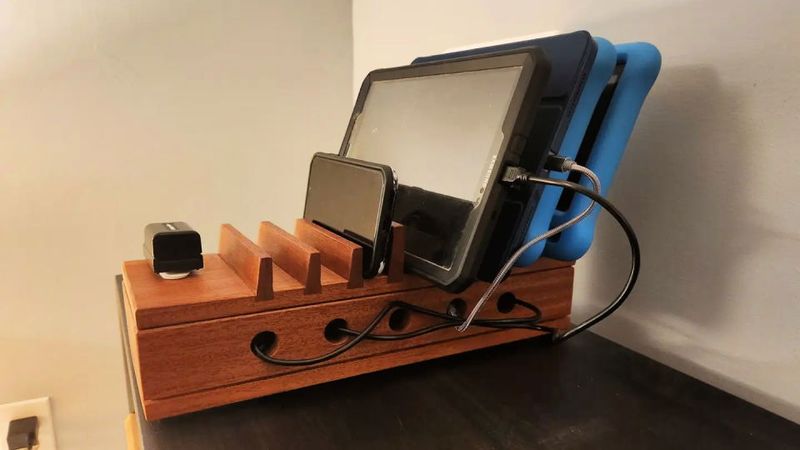
Tangled cords snaking across surfaces create instant visual chaos in your entryway. These electronic lifelines might seem necessary, but their haphazard presence suggests disorganization throughout your home.
Smart designers recommend creating dedicated charging stations with cable management solutions perhaps a decorative box with discreet openings for cords or a drawer with built-in power. These thoughtful approaches maintain tech convenience without the visual distraction.
Many homes benefit from relocating charging activities to less prominent areas like home offices or bedside tables. This separation keeps entryways focused on their primary purpose welcoming people, not devices. If entryway charging remains essential, wireless charging pads offer cord-free alternatives that maintain cleaner aesthetics.

